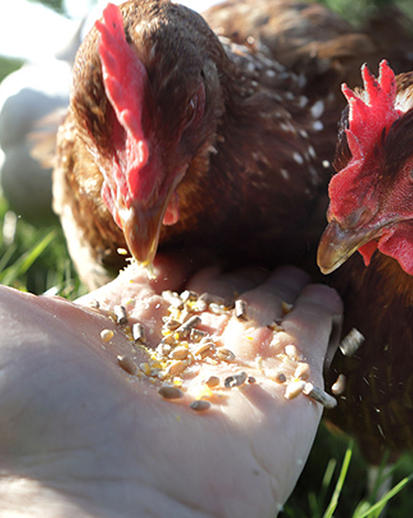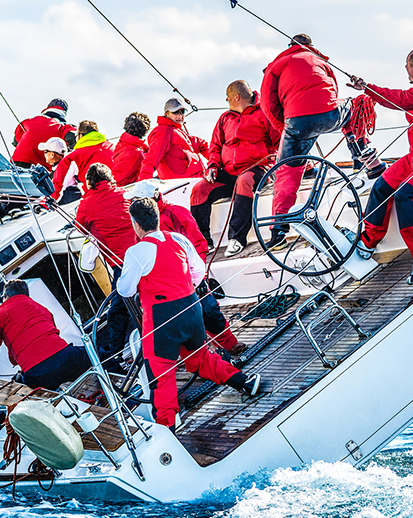How we create value for our stakeholders
Our Value Creation model is based on the Integrated Reporting <IR> framework and gives an overview of how we create value for our stakeholders based on six capital inputs: Human capital, Societal & relationship capital, Natural capital, Financial capital, Intellectual capital and Manufactured capital. We cluster these six capitals into People, Planet and Profit.
We transform our capital inputs into value and positive impact through taking advantage of the opportunities and minimizing the risks around the relevant megatrends in our business. A key part of our strategy, aside from our financial targets, is to continuously strengthen our commitment to sustainability. Through our business model, business strategy and purpose, we aim to have a positive impact for People, Planet and Profit, and deliver our share toward the Sustainable Development Goals (SDGs).
More information on how our Value Creation model and the definitions of the six capital, are provided in Explanation of some concepts and ratios.
Capital Inputs1
People
Our employees represent more than 120 nationalities in almost 50 countries. We engage with our stakeholders and partners to achieve our Purpose.
23,127
Employees
29:71
Gender ratio (f:m)
Inputs:
- Employees
- Training & development
- Stakeholder engagement & Public-private partnerships
- Philanthropy & sponsorship
Planet
We consume raw materials (including renewable and recyclable materials), energy from renewable and non-renewable sources and water.
21.5
Primary energy use (PJ)
24
Water withdrawal (non-once-through cooling, x 1,000 m3)
Inputs:
- Raw materials (including bio-based and recycled-based materials)
- Energy (including renewable sources)
- Water
Profit
We employ shareholder equity and borrowings to invest in partnerships and innovation. We purchase goods and services that are used in our manufacturing assets.
€7,399
Shareholders’ equity (million)
€3,586
Borrowings (million)
Inputs:
- Shareholders’ equity
- Borrowings
- Partnerships
- Scientific environment and academic infrastructure
- Purchased goods & services
- Manufacturing footprint
Our Business Model
We are a purpose-led, performance-driven organization developing innovative solutions addressing Nutrition & Health, Climate & Energy, and Resources & Circularity. Our organizational and operating model is made up of market-facing business groups (clustered in three business segments) focused on the primary business functions, global support and functional excellence departments, and regional organizations. Our Brighter Living Solutions — solutions that are better than the mainstream reference solution for people and/or the planet — account for 63% of our net sales.
Percentage of net sales by end-use market (continuing operations)
Value Outcomes2
People
The safety of our employees is our highest priority. Investments in training and career development provides value for employees and stakeholders. We aspire to pay a living wage to all our employees. Our products support improved nutrition and a more sustainable food system.
0.24
Employee engagement
76%
Employee engagement
Outcomes:
- Safety & health
- Brighter Living Solutions
- Engaged workforce
- Skills & employability
- Employee benefits
- Improved nutrition
Planet
We work to reduce our environmental footprint and support the reduction of the footprints of our value chain partners. Our products enable the transition to a more circular economy and contain safer ingredients and materials.
13.2
Scope 1 + 2 + 3 emissions (million tons CO2eq)
60%
Purchased renewable electricity
Outcomes:
- Reduced environmental footprint
- Brighter Living Solutions
- Enabling the transition to a more circular economy
- Safer ingredients & materials
Profit
We aim to deliver a strong financial performance, enabling us to re-invest in our asset base, fund our purpose-driven innovations, pay stable (preferably rising) dividends and provide good returns to our bondholders. Our tax policy follows the letter and spirit of the law.
€1,534
Adjusted EBITDA from continuing operations (million)
€955
Adjusted net operating free cash flow (million)
Outcomes:
- Financial performance (Adjusted EBITDA and Adjusted net operating free cash flow)
- Interest payments, capital gains / losses and return on investment
- Total Shareholder Return, including dividend
- Contribution to civil society via wages, taxes and social security including pensions
- Contribution to business success for customers and suppliers
Impact and SDGs3
People
- Better fed and healthier individuals and communities
- More prosperous and resilient employees for our company and in our value chain
Planet
- More sustainable use of resources, for our company and in our value chain
- Products that contribute to safer, healthier working & living environments
Profit
- We are purpose-led, performance-driven through science-based sustainable solutions
- Sustainable returns to investors
- Positive contributions to economic growth in the countries and markets in which we operate
1 All data presented in the People and Planet columns are subject to the non-financial reporting policy. Data presented in the Profit column relates to continuing operations.
2 All data presented in the People and Planet columns relate are subject to the non-financial reporting policy.
3 All data presented in the People and Planet columns are subject to the non-financial reporting policy. Data presented in the Profit column relates to continuing operations.
Brighter Living Solutions (BLS) is DSM’s program for the development of sustainable, innovative solutions with environmental and/or social benefits, creating shared value for our stakeholders. Brighter Living Solutions are products, services and technologies that, considered over their life cycle, offer a superior environmental impact (ECO+) and/or a superior social impact (People+) when compared to the mainstream alternative for the same application. The impact of Brighter Living Solutions can be realized at any stage of the product life cycle, from raw materials through the manufacturing process to potential re-use and end-of-life disposal.
Within the program, DSM conducts an annual ‘Product Category Sustainability Review’ for all product categories. This review identifies environmental and social impact differentiators and risks for each of our product categories and confirms the mainstream reference solution. To substantiate the identified differentiators DSM uses comparative Life Cycle Assessments (LCAs) and/or expert opinions to determine whether a product has a superior performance and can be identified as a Brighter Living Solution.
Primary energy is energy that has not yet been subjected to a human engineered conversion process. It is the energy contained in unprocessed fuels.
Final (consumed) energy is the energy that is consumed by end-users. The difference between primary energy and final consumed energy is caused by the conversion process between the two as well as any transmission losses.







